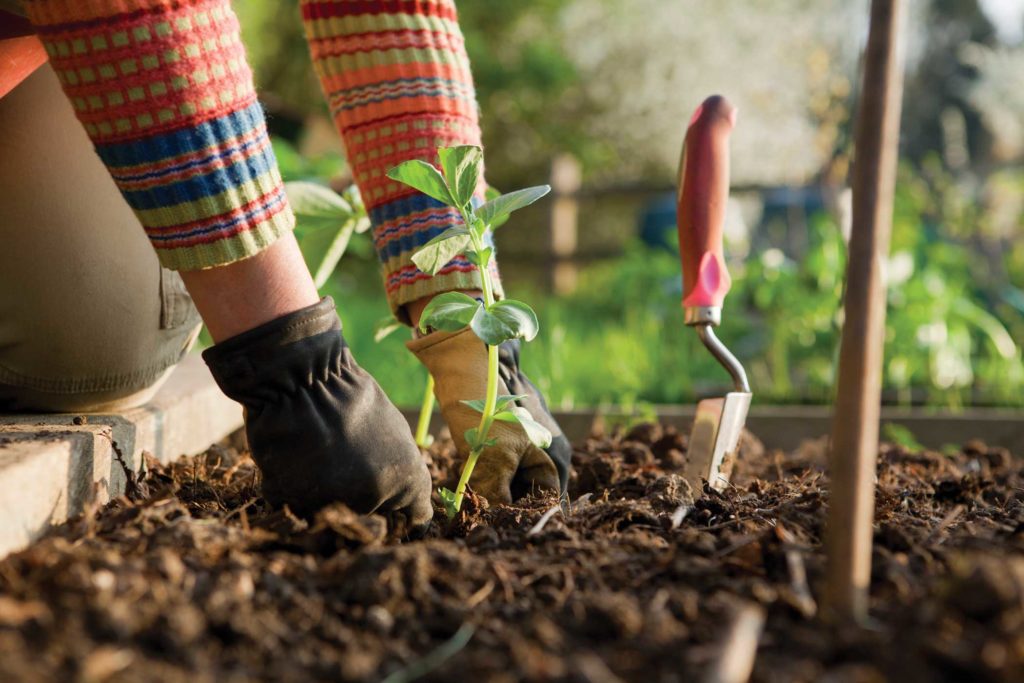
You have always done your best; you check the Moon Calendar before planting; you water your flowers and veggies regularly and at dusk to avoid burning leaves; you feed the soil appropriately; you even read up on gardening and watch every program you can in your spare time. Yet, your neighbor always gets better, greener, more luxurious plants than you do. It is a bit of a mystifying puzzle… You have asked her what she does that you do not do; you had quite a few chats on the topic of gardening, but she you have found out nothing she does that you miss out. Well, if so, it is because she has kept her trade secret from you: she uses a soil thermometer!
Yes, in fact, although most amateurs do not even know that they exist, all professional gardeners and farmers use them constantly, and they know how important they are for a good crop. In fact, when we talk about soil, we often hear about the acidity or pH, its composition (whether it is lime, sandy, clay etc.), how we can feed it with the right nutrients and how its orientation in relation to the Sun are all important factors to determine its fertility and what sort of plants can be grown there. However, very few people know that the temperature of land you grow your crops on is one of the most important factors to decide which crops to plant and when. In order to know the temperature of the soil, a bit like a doctor does with a patient, you need a thermometer.
UPDATE: Smart Choice is offering a special 50% DISCOUNT
Discount link: Stainless Steel Soil Thermometer Special Offer
Some Key Facts
To start with you will need to understand how soil temperature is important for germination. Different species need to be planted at different temperatures, for example:
- If the soil is 70 degrees Fahrenheit or higher, you can plant corn, cucumbers, melons, peppers, and squash.
- If the temperature is 60 degrees Fahrenheit or higher, your choice will be beans, beets, broccoli, cabbage, carrot or cauliflower.
- If the temperature is 50 degrees Fahrenheit or higher, you can plant chard, leeks, onions, and turnips.
- If the soil temperature is 40 degrees or higher, you may choose peas, kale, lettuce, and spinach.
It is the soil temperature that determines when you should safely and most effectively decide to plant; this changes according to where you live, the plot’s exposure to sunshine and the local climate, as well as other factors (e.g. the proximity of walls etc.).
How Can You Use a Soil Thermometer?
Soil thermometers are comparatively easy to use; you basically have to stick it into the ground and read the temperature on the display before planting. However, there are a few tips that will come in really handy:
- Buy a good quality thermometer: this is, of course, essential to get an accurate reading and to have a tool that will last you.
- Dig a hole first: use a screwdriver or a stick to dig the hole where you will place the thermometer; this is to avoid using the thermometer itself to dig, as it may break against stones.
- Cover the thermometer with your hand: this is to shade it from sunlight; this will give you a clearer and more accurate reading.
- Measure at the right depth: this should go beneath where the roots of your seedling or base if your bulb or tuber reaches; it should be at least 6 cm.
- Use multiple measurements: one measurement may not be fully indicative; it may be in an odd spot of your plot, for example; thus, measure the temperature of the soil several times (two or three at least).
Now you know how to use a soil thermometer, you may wish to know how to choose one. I have looked around, and found a perfect one for you; here’s why…
Make the Smart Choice!

If you want to get a soil thermometer that will never let you down, a very wise choice is Stainless Steel Soil Thermometer by Smart Choice; just read on!
To start with as the name suggests, Stainless Steel Soil Thermometer by Smart Choice is made of, well, you guessed, stainless steel; this means that it will never rust, that it is very hard and very durable. It is 12.7 mm thick, thus you can be sure that it will last you a lifetime. Iron ones, for example, will soon rust and can even break, but this one, be assured will not.
Stainless Steel Soil Thermometer by Smart Choice is 12 cm long! This is far more than the average soil thermometer on the market. Remember what we said in the tips above? It is very, very important to read the temperature beneath the reach of the roots or bulb and at a minimum of 6 cm; with Stainless Steel Soil Thermometer by Smart Choice you can double that!
The display of Stainless Steel Soil Thermometer by Smart Choice is not plastic or PVC like many other such thermometers; these materials are prone to fogging and moisture, which affects the readability of the gauge. Instead, with a 1.5-inch wide glass display, you can be certain that you will always be able to read it.
I can tell you another typical fault of soil thermometers; they often get the temperature wrong, especially digital ones. Instead, Stainless Steel Soil Thermometer by Smart Choice is much more precise than them; it will give you the exact temperature with confidence and it has a much wider range than other thermometers: from 0 to 200 degrees Fahrenheit.
A Few More Facts

Customers who have chosen to use Stainless Steel Soil Thermometer by Smart Choice have been enthusiastic about it so far, and reviews are outstanding; “Excellent to detect air cooling problems,” says Robert E. Deeter, who appears to be quite knowledgeable; “I appreciate the blue highlight, which was what I was looking for to see if I could start my leafy greens in the garden. Good value,” are Paul Stan’s words. In fact, if you are not satisfied with it, you have a whole 30 days to get your money back, and this is a guarantee.
So now you know one of the best-kept secrets of professional gardeners; they use soil thermometers. You also know how to use them properly and how to choose a good one. As a final tip, you may want to use Stainless Steel Soil Thermometer by Smart Choice also to take the temperature of manure and compost; this way you will avoid burning the tender roots of seedlings; it should never be higher than 160 degrees Fahrenheit.
Thus, if you want a precise, reliable, durable, affordable, easily readable, long and trustworthy soil thermometer, the choice is simple and smart: Stainless Steel Soil Thermometer by Smart Choice is what you are looking for!
100% Accurate Measuring or It’s FREE!
Smart Choice is a great company that offers mind-blowing guarantee… If you buy this Stainless Steel Soil Thermometer and you are not satisfied with your purchase, you’ll get your money back and keep the device! Your satisfaction is 100% guaranteed! Buy the Stainless Steel Soil Thermometer TODAY!
